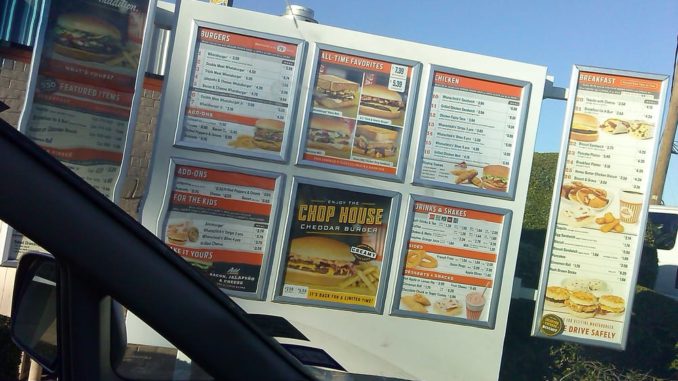
By Alisha Goldberg - 6-11-2019
Good Times Burgers & Frozen Custard, a quick service drive thru chain in Denver, Colorado, has spent recent months proving that a small restaurant group can advance the frontier on next-generation restaurant technologies just as well as any of the major chains. Now the company has announced the expansion of its conversational AI platform from pilot testing for breakfast into lunch and dinner.
Meanwhile, as reported here, McDonald’s will begin using AI-enabled platform capabilities to present customized menu items on its digital signage at drive-through locations. The menu items that it serves up will be based on an individual customer’s initial food order and also according to such factors as the weather, the time of day, and how busy the restaurant is at the moment. The menu can also be used to serve up “popular” items that also happen to have particularly high profit margins.
And last month, as reported here, Sonic Drive-In, the fast-food restaurant chain owned by Inspire Brands, the parent company of Arby’s and Buffalo Wild Wings, announces that it, too, is getting into the game. The Oklahoma-based company began testing the waters of a new drive-in and drive-through ordering experience for QSRs with an AI-powered voice assistant and personalized dynamic menu. The new technology is coming to selected Sonic locations in the U.S. later this year.

Valyant AI is the Colorado-based technology solution provider behind the Good Times technology, which includes custom-built hardware and is specifically designed for high-volume, fast food restaurants. It was programmed using actual customer recordings. Thanks to machine learning, the system is now being refined with live customer orders and becoming smarter and more accurate by the day.
The system requires a significantly smaller set of keywords to take meal orders than a general purpose voice assistant that requires an enormous vocabulary and a knowledge base that contains virtually everything under the sun. The platform integrates with existing drive thru hardware and on-premise or cloud-based POS systems, which, in turn, can integrate with all other restaurant management systems.
To ensure accuracy, the system employs human-in-the-loop on all orders. This allows guaranteed order accuracy, problem identification and opportunities for improving the experience.

The primary aim of the initiative is to streamline the food ordering process, improve employee efficiency, and serve more customers more quickly, driving top-line revenue growth. The technology addresses the labor shortages that invariably occur during peak times of the day.
Time is of the essence in a drive-thru environment. A long line usually translates into loss revenue as prospective customers look for an alternative restaurant. In fact, upwards of 75% of a typical quick serve restaurant’s revenue is generated from customers in the drive thru line.
According to recent studies, the amount of time between the customer placing an order and receiving it at the pick-up window has significantly increased in recent years, largely due to labor shortages. Fast food restaurants are increasingly struggling to find and retain employees who want these jobs, and customers are paying the price. One study puts the average wait time in the drive thru line at 234 seconds, nearly double what it was 15 years ago.
By improving ordering accuracy and decreasing wait times between food ordering and pickup, the new system has been shown to improve customer satisfaction. The new technology is reportedly responsible for an average wait time reduction of approximately seven seconds.
According to a recent survey of Good Times customers who participated in the breakfast test pilot, 95% said the AI technology met or exceeded their expectations. More than 80% rated their total experience with the technology as 4 out of 5 stars.
The ordering process begins when a sensor located under a customer’s car is triggered. The technology initiates a voice greeting that welcomes the customer to the restaurant while also disclosing the fact that their order is being taken not by a human but by an AI-enabled assistant. The flow of the conversation is unstructured and conversational, to the point that customers might not have even noticed that they were talking to a machine. And that’s the whole idea.

